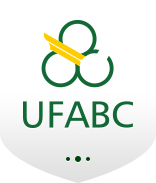Banca de DEFESA: FERNANDO TAKASHI DA ROCHA ARITA
Uma banca de DEFESA de DOUTORADO foi cadastrada pelo programa.STUDENT : FERNANDO TAKASHI DA ROCHA ARITA
DATE: 21/07/2025
TIME: 14:00
LOCAL: Auditório 801 no 8º andar do Bloco B do Campus de Santo André da Universidade Federal do ABC
TITLE:
Metal Oxide Thin Films for Stable and Efficient Inverted Perovskite Solar Cells
PAGES: 96
BIG AREA: Engenharias
AREA: Engenharia de Materiais e Metalúrgica
SUBÁREA: Materiais Não-Metálicos
SPECIALTY: Cerâmicos
SUMMARY:
The growing impacts of global climate change have intensified the search for efficient and sustainable energy sources. Perovskite solar cells (PSCs) have emerged as a promising alternative, with efficiencies approaching those of commercial silicon-based devices. However, their commercialization is hindered by the instability of the perovskite layer under ambient conditions, particularly humidity, which can be mitigated by modifying adjacent layers. This work investigates the use of metal oxide thin films as hole transport layers (HTLs) in inverted perovskite solar cells (IPSCs). Various copper oxide films were deposited via reactive RF sputtering, while copper-based delafossite films were fabricated using both reactive RF sputtering followed by high-temperature annealing and spin-coating from nanoparticle suspensions. These films were thoroughly characterized to extract their optoelectronic properties, which were then used as inputs for numerical simulations assessing their performance as HTLs in IPSCs. Within the copper oxide series, single-phase Cu₂O, CuO, and the intermediate phase Cu₄O₃ were successfully deposited, exhibiting properties consistent with existing literature. Hall effect and capacitance-voltage measurements identified all copper oxides to have p-type conductivity and Cu₄O₃ as an efficient hole transport material, with a hole mobility of 30.4 cm²·V⁻¹·s⁻¹, about fifty times higher than that of Cu₂O and CuO. Consequently, Cu₄O₃ significantly enhanced the simulated power conversion efficiency of the device, outperforming both other copper oxides and the widely used organic HTL, PEDOT:PSS. For the delafossite series, sputtered thin films were obtained through annealing at 900°C in an argon atmosphere, a temperature significantly lower than the required under ambient conditions. Besides, thin films were deposited from suspensions of ball-milled nanoparticles synthesized via the Pechini method, with film thickness controllable via suspension concentration and spin-coating speed. Cu4O3-based devices promoted intense perovskite degradation, even when surface passivation strategies were employed. CuCrO2-based devices on the other hand showed comparable device parameters to NiOX-based devices, used as a reference in this study. All devices were fabricated under ambient conditions, which might have intensified degradation processes. However, metal oxide thin films demonstrated strong potential as hole-extracting layers in inverted perovskite solar cells and can be precisely investigated with device productions under controlled conditions.
COMMITTEE MEMBERS:
Presidente - Interno ao Programa - 1552290 - ANDRE SANTAROSA FERLAUTO
Membro Titular - Examinador(a) Interno ao Programa - 1545738 - MARCIA TSUYAMA ESCOTE
Membro Titular - Examinador(a) Externo ao Programa - 2604128 - ALEXANDRE JOSE DE CASTRO LANFREDI
Membro Titular - Examinador(a) Externo à Instituição - Helder Scapin Anizelli
Membro Titular - Examinador(a) Externo à Instituição - JOSE HUMBERTO DIAS DA SILVA - UNESP
Membro Suplente - Examinador(a) Interno ao Programa - 1545089 - DANIEL ZANETTI DE FLORIO
Membro Suplente - Examinador(a) Externo à Instituição - DANIELE CRISTINA FERREIRA - USP




